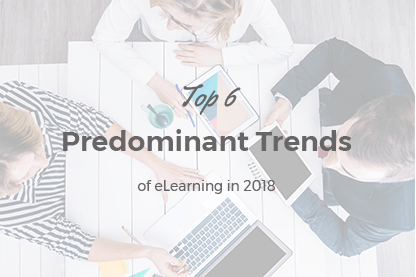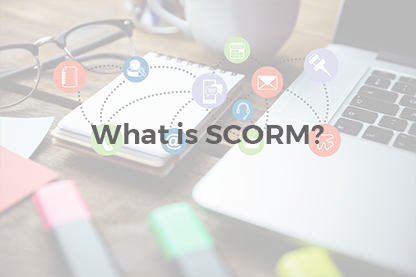Webinars and web conferences became an integral part of eLearning process and for a long time already have been perceived as an alternative to live communication the distance education is missing. It is one of the most convenient ways to stay connected with your eLearners, clarify obscure moments and let them ask questions that appear during unassisted studies. However, there is a knack to holding an affective webinar and today’s article can provide some advice on the web conference preparing and holding users’ attention.
Are you going to handle an eLearning webinar or live session? Read how to prepare for a webinar and hold students’ attention.
The article was last updated on August 19th 2016.
 Webinars and web conferences became an integral part of eLearning process and for a long time already have been perceived as an alternative to live communication the distance education is missing. It is one of the most convenient ways to stay connected with your eLearners, clarify obscure moments and let them ask questions that appear during unassisted studies.
Webinars and web conferences became an integral part of eLearning process and for a long time already have been perceived as an alternative to live communication the distance education is missing. It is one of the most convenient ways to stay connected with your eLearners, clarify obscure moments and let them ask questions that appear during unassisted studies.
However, there is a knack to holding an affective webinar and today’s article can provide some advice on the web conference preparing and holding users’ attention.
WEBINAR PREPARATIONS
Like any other event a webinar requires careful preparation. Nobody likes listening to the speaker who hasn’t bothered to prepare the materials and thought it through.
Webinar preparations can be divided into three steps:
- Technology preparation
- Content preparation
- Webinar design and structuring

Technology preparation
Why is it important to see beforehand to the web-conference tool choice? The reason lies in possible technology incompatibility or connection issues. Any conference tool has certain system requirements that is why test the software, check the connection quality and practice beforehand.

Content preparation
Any webinar or web-conference has a topic you decide on well before its scheduling and announcing. Webinar is supposed to solve users’ problems and answer their questions that is why ask your students via surveys, chats, forums or social networks what they want to clarify and find answers to. Prepare the materials and make an announcement describing what attendees will learn and what will be discussed.

Webinar design and structuring
Like eCourses, webinars have to be well-structured and logically organized. Any speech has an introductory part, main body and a conclusion. While at the beginning you present your topic, announce the agenda and the webinar structure, in the main part you deliver key points, not forgetting about engagement, examples illustration and timeframe.
Webinar presentation design principles are similar to the course ones:
- moderate text and image usage,
- engaging slides,
- visual elements quality,
- layout color choice,
- readable fonts etc.
The main rule is simplicity. The slides are supposed to feature key points and not to be a list of dry facts you are reading from the screen.
BUT HOW TO HOLD USERS' ATTENTION?
When the webinar is prepared another question appears: how to hold users’ attention? Webinar preparation is essential but ability to awake listeners’ interest, make them ask questions and send feedback is much more important. To avoid talking into nothingness because everyone left you can follow simple rules:
1. Take into consideration the type and age of your speakers.
People of different ages listen and learn differently: while adults value information capability and efficiency young people prefer interactivity and gamification approach.
2. Be aware of different learners’ styles (auditory, visual and kinesthetic).
Prepare Power Point presentation with charts, images and other visual elements for visual learners; highlight the key point for auditory learners and think about interaction with kinesthetic learners (questions, chat participation).
3. Follow webinar timeframe.
According to the studies an optimal webinar length is between 45-60 minutes including 15 minutes Q&A discussion. If you think of including video its ideal length is around 3 minutes.
4. Encourage participation.
People of different ages listen and learn differently: while adults value information capability and efficiency young people prefer interactivity and gamification approach.
5. Bring case study examples.
Case studies are supposed to tell stories and thereby diversify dry content and make it memorable.
HOW TO CONDUCT A WEB-CONFERENCE WITH JOOMLMS?
JoomLMS is integrated with GoToMeeting live conference platform. To learn how to configure GoToMeeting settings please read GoToMeeting Configuration Overview.

Do you want to know more? Request JoomLMS Free Trial!
What to read next?
How to Organize ELearning Content Effectively with JoomLMS
How to Get Students to JoomLMS Classroom?
How to Use LMS Reporting to Improve ELearning Performance








